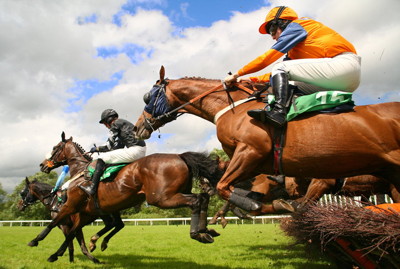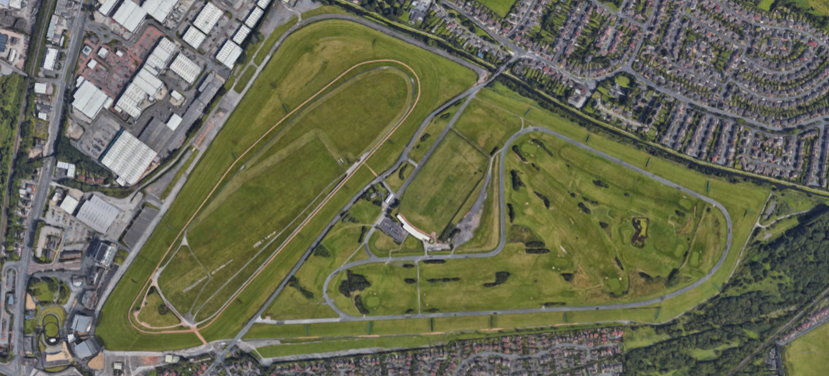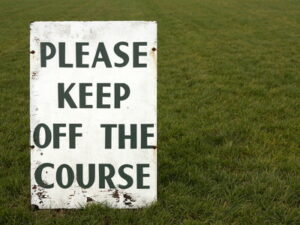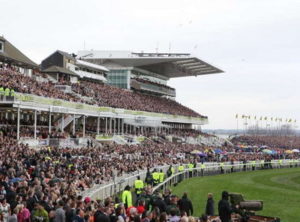How Often Does The Favourite Win The Grand National?
 When it comes to horse racing, it would be easy to assume that the bookmakers would absolutely hate it when a horse with long odds wins a major race. After all, the longer the odds are the more likely it is that the payout will be really big for them. Yet in reality, of course, very few people place massive bets on horses with huge odds unless they know something that the rest of us don’t. Lots of people will bet on the favourite, however, meaning that bookies are far more exposed to losses across the board, even if the odds on the favourite are quite low.
When it comes to horse racing, it would be easy to assume that the bookmakers would absolutely hate it when a horse with long odds wins a major race. After all, the longer the odds are the more likely it is that the payout will be really big for them. Yet in reality, of course, very few people place massive bets on horses with huge odds unless they know something that the rest of us don’t. Lots of people will bet on the favourite, however, meaning that bookies are far more exposed to losses across the board, even if the odds on the favourite are quite low.
Think about it this way. One person having a £100,000 bet on a 40/1 offering will win £4 million. Yet one-hundred thousand people having a £50 wager on a 2/1 shot will win £10 million. Which is why the bookmakers absolutely hate it when the favourite wins, given that the latter scenario is far more likely to occur than the latter.
All of which obviously begs the questions, just how often do the favourites win the big races? The answer is a complex one, with any number of variables needing to be taken into account. There are some races that feature only a few horses, for example, so the favourite is more likely to win just in sheer terms of numbers. Other times the race might be open enough to mean that any number of horses could win it and there are either joint-favourites or most of the horses odds have very little between them.
There’s also the fact that sometimes something is a favourite because the bookies really think it’s going to win easily and price it accordingly, whilst other times it might just be being backed heavily so the bookmakers drop the odds to discourage people from betting on it, thereby reducing their liability. The best race to look at when it comes to the favourites is the Grand National, with the field for the race normally being so big that the favourite can change from one minute to the next.
About The Grand National

Very quickly, it’s just worth telling you a little bit about the Grand National and why it’s such a much-loved event. After all, there may well be some of you that aren’t really into horse racing and don’t know why it is that so many people who don’t bet on any other race though the rest of the year choose to tune in for this particular jump racing event.
Hosted at Aintree Racecourse in a suburb of the city of Liverpool, the Grand National is run every April and takes place over four miles and five-hundred and fourteen yards. The horses taking part in it need to jump over thirty fences during two laps of the course, with many of those fences having their own personality. There’s the likes of Beecher’s Brook, for example, which is five foot tall and has a landing side that’s lower than the take-off side. There’s also The Chair, arguably the best-known of all of the fences. It is the only fence on the course that has ever seen a person lose their life, which they did in 1862.
The fences you’ll find horses jumping at Aintree during the Grand National are taller than the fences at pretty much any other National Hunt event and that fact, combined with the length of the course itself, means that many people in the industry see it as the best possible test that a horse and its rider can face. It has been broadcast live on free-to-air television since 1960, which is probably part of why it captures the public imagination.
The fact that field can include up to forty different horses also adds to the excitement, with long-odds horses winning on occasion and adding to the sense that it’s a race that anyone can win. The most famous example being a horse named Foinavon, who was 100/1 at the start of the race and lagging behind all other horses midway through, but managed to win when most other horses were involve in a pile-up at the twenty-third fence, which is now named after him.
Should You Bet On The Favourite?
| Year | Starting Price Favourite | Odds | Final Position |
|---|---|---|---|
| 1994 | Moorcroft Boy | 5/1 | 3rd |
| 1995 | Master Oats | 5/1 | 7th |
| 1996 | Rough Quest | 7/1 | WON |
| 1997 | Go Ballistic | 7/1 | p/u at 29th Fence |
| 1998 | Earth Summit | 7/1 | WON |
| 1999 | Fiddling The Facts | 6/1 | Fell at Beecher’s Brook |
| 2000 | Dark Stranger | 9/1 | u/s Rider at 3rd Fence |
| 2001 | Edmond / Inis Cara / Moral Support (Joint-Favourites) | 10/1 | Fell at The Chair / Fell at 4th Fence / Refused at Canal Turn |
| 2002 | Blowing Wind | 8/1 | 3rd |
| 2003 | Shotgun Willy | 7/1 | p/u After 21st Fence |
| 2004 | Clan Royal / Bindaree / Joss Naylor / Jurancon II (Joint Favourites) | 10/1 | 2nd / u/s Rider at 6th Fence / p/u at 19th Fence / Fell at 4th Fence |
| 2005 | Hedgehunter | 7/1 | WON |
| 2006 | Hedgehunter / Clan Royal (Joint-Favourites) | 5/1 | 2nd / 3rd |
| 2007 | Point Barrow / Joes Edge / Monkerhostin (Joint-Favourites) | 8/1 | Fell at 1st Fence / p/u at 20th Fence / Refused 7th Fence |
| 2008 | Comply or Die / Cloudy Lane (Joint-Favourites) | 7/1 | WON / 6th |
| 2009 | Butler’s Cabin | 7/1 | 7th |
| 2010 | Don’t Push It / Big Fella Thanks (Joint-Favourites) | 10/1 | WON / 4th |
| 2011 | The Midnight Club | 15/2 | 6th |
| 2012 | Seabass / Shakalakaboomboom (Joint-Favourites) | 8/1 | 3rd / 9th |
| 2013 | Seabass | 11/2 | 13th |
| 2014 | Double Seven / Teaforthree (Joint-Favourites) | 10/1 | 3rd / u/s Rider at 13th Fence |
| 2015 | Shutthefrontdoor | 6/1 | 5th |
| 2016 | Many Clouds / The Last Samuri (Joint-Favourites) | 8/1 | 16th / 2nd |
| 2017 | Blaklion | 9/1 | 4th |
| 2018 | Total Recall | 7/1 | p/u at 27th Fence |
| 2019 | Tiger Roll | 4/1 | WON |
| 2021 | Cloth Cap | 11/2 | p/u at 28th Fence |
| 2022 | Any Second Now | 15/2 | 2nd |
| 2023 | Corach Rambler | 8/1 | WON |
| 2024 | I Am Maximus / Limerick Lace (Joint-Favourites) | 7/1 | WON / 10th |
Key: u/s – Unseated | p/u – Pulled Up
You’ll have gotten a taste for how crazy the Grand National can be from the last section, perhaps leading to wonder whether or not it’s ever worth betting on the favourite for the race. The short answer to that question is probably ‘no’, as we’ll explain now. It perhaps says something that the first-ever running of the Grand National, according to historians of the event, was won by a horse named ‘Lottery’. Indeed, many people often equate the race to another popular institution in the UK with the word ‘National’ in its title, the National Lottery.
It’s all well and good going off what people say about the event conversationally, but what to do the actual stats show? The short answer is that the favourite has only won the race on eleven occasions since the end of the Second World War. Even more interestingly, in thirty-seven of those races they haven’t even managed to complete the course. Where, then, has the favourite finished? In the above table we look at the races back as far as 1994, exploring the Starting Price of the favourite and where they actually ended up.
Race Changes May Favour The Favourites
 Ahead of the 2024 renewal several changes were made to the race for safety reasons. To start with the field was reduced to 34 from 40 with no reserves. In 2024 there were two non-runners so only 32 went off at the start. In addition the race was brought forward to 4pm to allow for better ground conditions and better light and finally the race now begins with a standing start to reduce the speed of the horses at the first fence to hopefully allow more of them to get over it without issue.
Ahead of the 2024 renewal several changes were made to the race for safety reasons. To start with the field was reduced to 34 from 40 with no reserves. In 2024 there were two non-runners so only 32 went off at the start. In addition the race was brought forward to 4pm to allow for better ground conditions and better light and finally the race now begins with a standing start to reduce the speed of the horses at the first fence to hopefully allow more of them to get over it without issue.
These are all positive changes and were brought in quickly after the 2023 race was delayed due to animal rights protesters invading the course. There were no such protests in 2024 suggesting the changes have been well received all around.
What the changes may have done though is made the race less of a lottery (Grand National pun there as the first ever winner was called Lottery). Indeed despite only 32 starting in 2024 21 of them made it to the end, which was the highest number since 1992. This does mean though that the favourites now have less jeopardy and that may make them more likely to win.
When I Am Maximus won in 2024 it was the second year in a row that the favourite or joint-favourite won the race. That hadn’t happened for 130 years, last occurring in 1894. Therefore, as time goes on it may actually become more and more attractive to back the favourites. The race is still full of drama though, for example, 2023 winner as favourite Corach Rambler fell at the first fence in 2024 so it is no like it is now plain sailing for the top horses.
Odds Of Horses That Win The Grand National
| Year | National Winner | Age | Starting Price |
|---|---|---|---|
| 1994 | Miinnehoma | 11 | 16/1 |
| 1995 | Royal Athlete | 12 | 40/1 |
| 1996 | Rough Quest | 10 | 7/1 |
| 1997 | Lord Gyllene | 9 | 14/1 |
| 1998 | Earth Summit | 10 | 7/1 |
| 1999 | Bobbyjo | 9 | 10/1 |
| 2000 | Papillon | 9 | 10/1 |
| 2001 | Red Marauder | 11 | 33/1 |
| 2002 | Bindaree | 8 | 20/1 |
| 2003 | Monty’s Pass | 10 | 16/1 |
| 2004 | Amberleigh House | 12 | 16/1 |
| 2005 | Hedgehunter | 9 | 7/1 |
| 2006 | Numbersixvalverde | 10 | 11/1 |
| 2007 | Silver Birch | 10 | 33/1 |
| 2008 | Comply or Die | 9 | 7/1 |
| 2009 | Mon Mome | 9 | 100/1 |
| 2010 | Don’t Push It | 10 | 10/1 |
| 2011 | Ballabriggs | 10 | 14/1 |
| 2012 | Neptune Collonges | 11 | 33/1 |
| 2013 | Auroras Encore | 11 | 66/1 |
| 2014 | Pineau De Re | 11 | 25/1 |
| 2015 | Many Clouds | 8 | 25/1 |
| 2016 | Rule The World | 9 | 33/1 |
| 2017 | One For Arthur | 8 | 14/1 |
| 2018 | Tiger Roll | 8 | 10/1 |
| 2019 | Tiger Roll | 9 | 4/1 |
| 2021 | Minella Times | 8 | 11/1 |
| 2022 | Noble Yeats | 7 | 50/1 |
| 2023 | Corach Rambler | 9 | 8/1 |
| 2024 | I Am Maximus | 8 | 7/1 |
| Average | – | 9.5 | 21.1/1 |
Having now looked at the list of the favourites for the last thirty races (with 1993’s race being made void because of a false start), what does it tell us?
There are two main things that stand out, with the first of them being the fact that all but three of the eight favourites that went on to win the race was priced at 7/1. Something to perhaps bear in mind in future instances of the race! If the favourite starts the race at 7/1 then it might well be worth lumping on, given that only Go Ballistic, Shotgun Willy, Cloudy Lane, I Am Maximus and Butler’s Cabin went off as favourites at that price and did win, with Cloudy Lane missing out to another 7/1 Joint-Favourite.
Another thing worth bearing in mind is that, of the twelve favourites that have won the race since the end of the Second World War, eight of them have done so over the last thirty years. Since 2019 three favourites have won in 5 races (remember 2020 was cancelled). Is that a sign, perhaps, that the race is getting easier? Or does it indicate that bookmakers are getting better at realising the favourites?
In recent years very specific attempts have been made to make the race much safer and more in-line with what campaigners would like from the racecourse, meaning that more horses are likely to finish the race, including the favourites.
Things You Should Look Out For
 If betting on the favourite for the Grand National is unlikely to return you many wins, what sort of information should you keep an eye out for in order to make the best informed decision? Obviously you can’t rely on a 7/1 favourite running after all!
If betting on the favourite for the Grand National is unlikely to return you many wins, what sort of information should you keep an eye out for in order to make the best informed decision? Obviously you can’t rely on a 7/1 favourite running after all!
The first thing you’ll want to do is check out the age of the horse. Only one horse aged seven has won the race since 1940, in fact that was in 2022, with few aged eight doing all that well either other than in recent times. You want a horse with experience, but age isn’t a guarantee of success given that those aged thirteen or up don’t tend to do very well either. The table below looks at the age of the winner over the past thirty years.
Over the past thirty races, then, there have been two twelve-year-old winners, five eleven-year-old winners, seven ten-year-old winners, nine nine-year-old winners, six eight-year-old winners and one seven year old winner. The implication, therefore, is that a horse aged around nine or ten years of age is well-placed to put in a decent run at the National.
| Age | Number Winners Since 1994 |
|---|---|
| 7 | 1* |
| 8 | 6 |
| 9 | 9 |
| 10 | 7 |
| 11 | 5 |
| 12 | 2 |
* Noble Yeats won in 2022 at 7 years old, the first 7 year old to win since 1940
The starting-price odds also hint at the idea that middle to long-shots can have just as much a chance of winning as the favourites. That is most clear in the 100/1 shot Mon Mome winning in 2009, the year that the favourite’s Starting Price was 7/1. Average odds of the winner over those years are around 21/1.
Other things to look out for include links to the Irish. Eleven winners since 2000 have originated from stables in Ireland. Compare this to the fact that Irish horses won 9 races between 1900-1999 and it shows that the Irish are steadily increasing their grasp on Britain’s most famous race. Since 2016 horses trained on the Emerald Isle have won six out of eight of the races (remembering there was no National in 2020), that is a recent success rate of 75%. Indeed that was only broken by the fact Lucinda Russell trained horses won in 2016 (One For Arthur) and 2023 (Corach Rambler).
You’ll also want to keep an eye out for horses that no how to jump. That might sound like a daft thing to say, but twenty-one of the last twenty-three winners have unseated their riders or fallen no more than twice in their careers. Finally, keep an eye out for horses that have had a run out recently.
Rest isn’t as good for National victors as finding a rhythm, with twenty-four of the previous thirty winners having had a race within the previous month or so.
Finally if you are thinking of backing a Mare in the race then consider only 13 Mares’ have ever won the race and the last one to do so was Sheila’s Cottage in 1948. Likewise people often fancy a grey horse, partly because they are easier to follow in the race. Only three greys have ever won the National, however, although the last one was fairly recent being Neptune Collonges in 2011.



